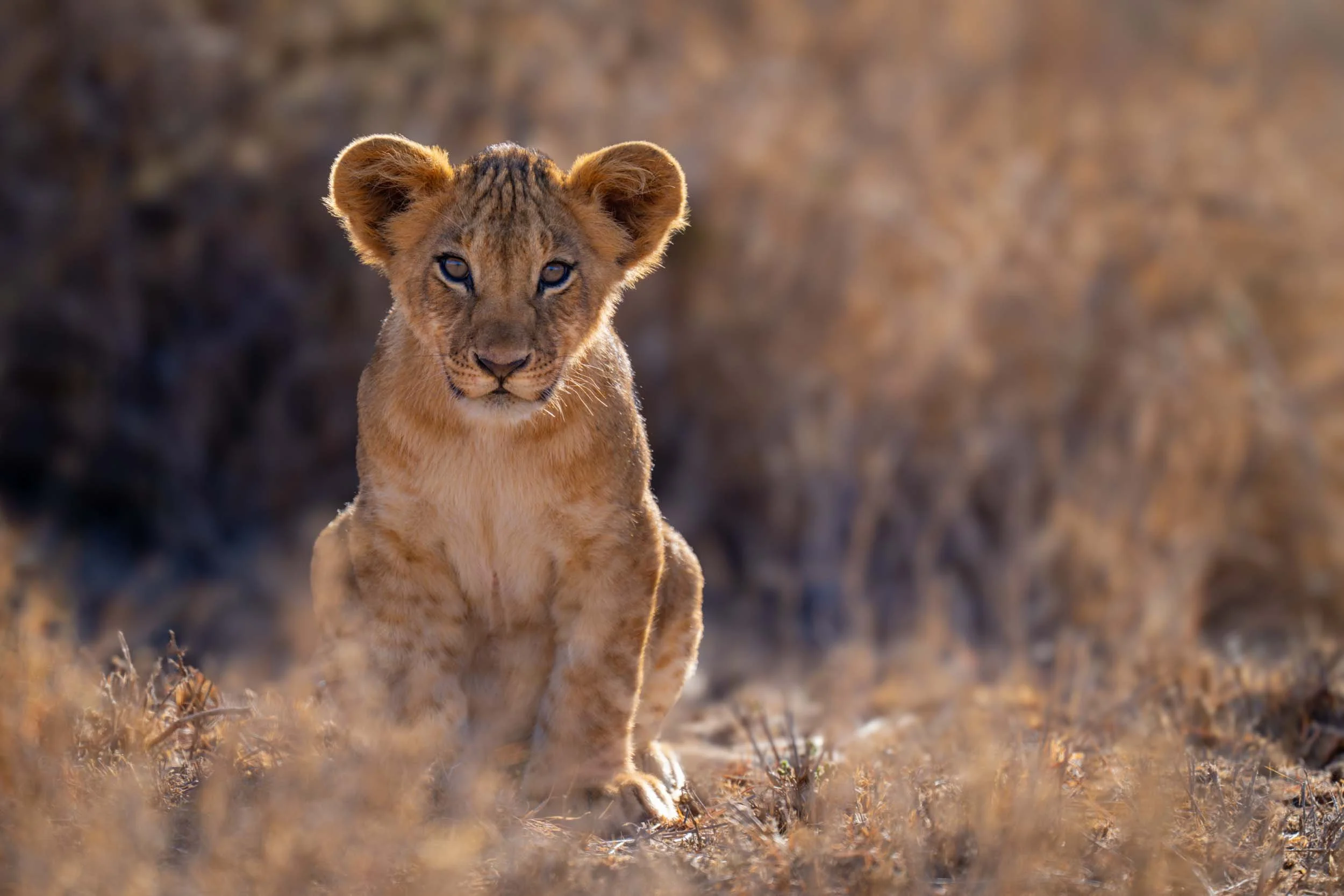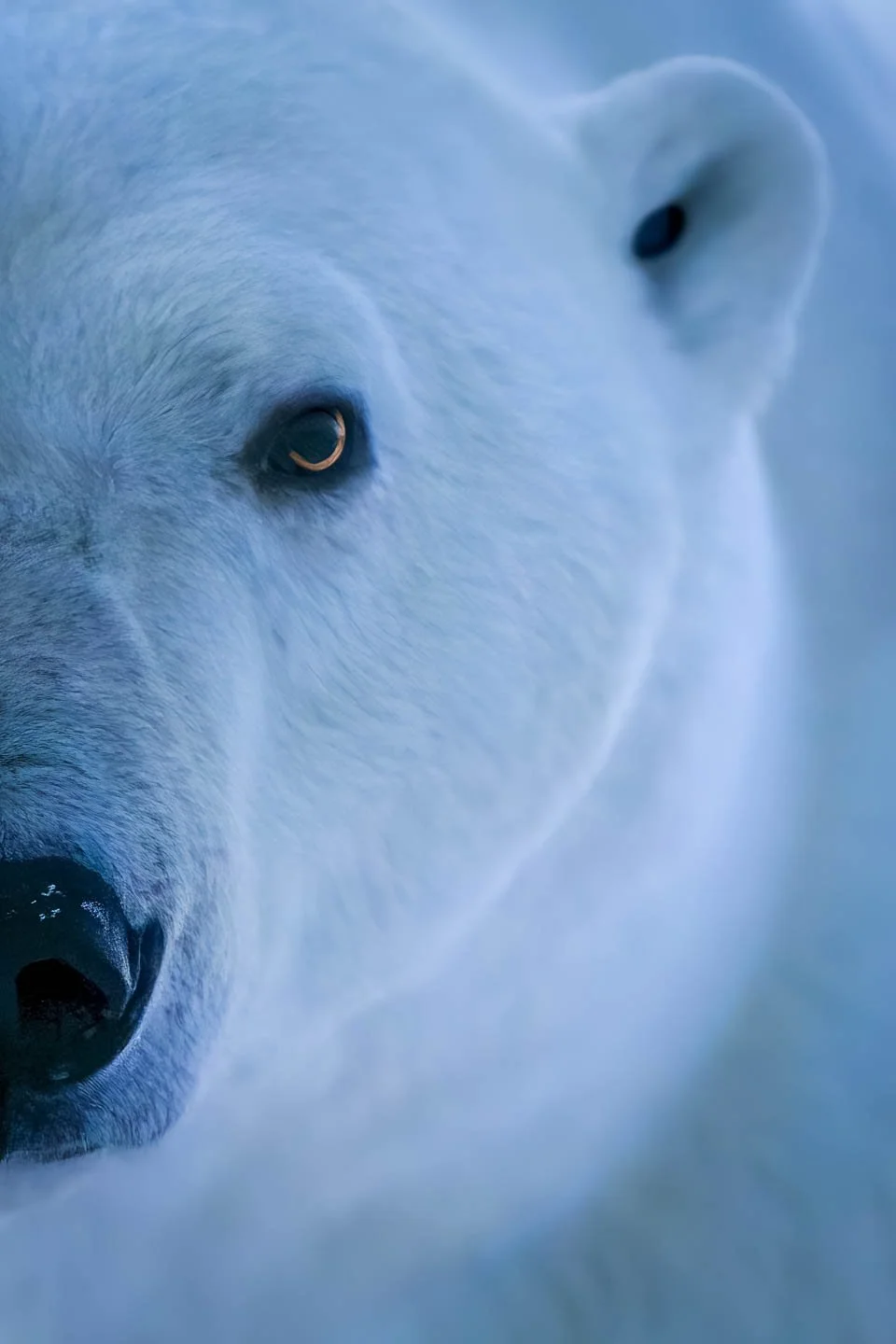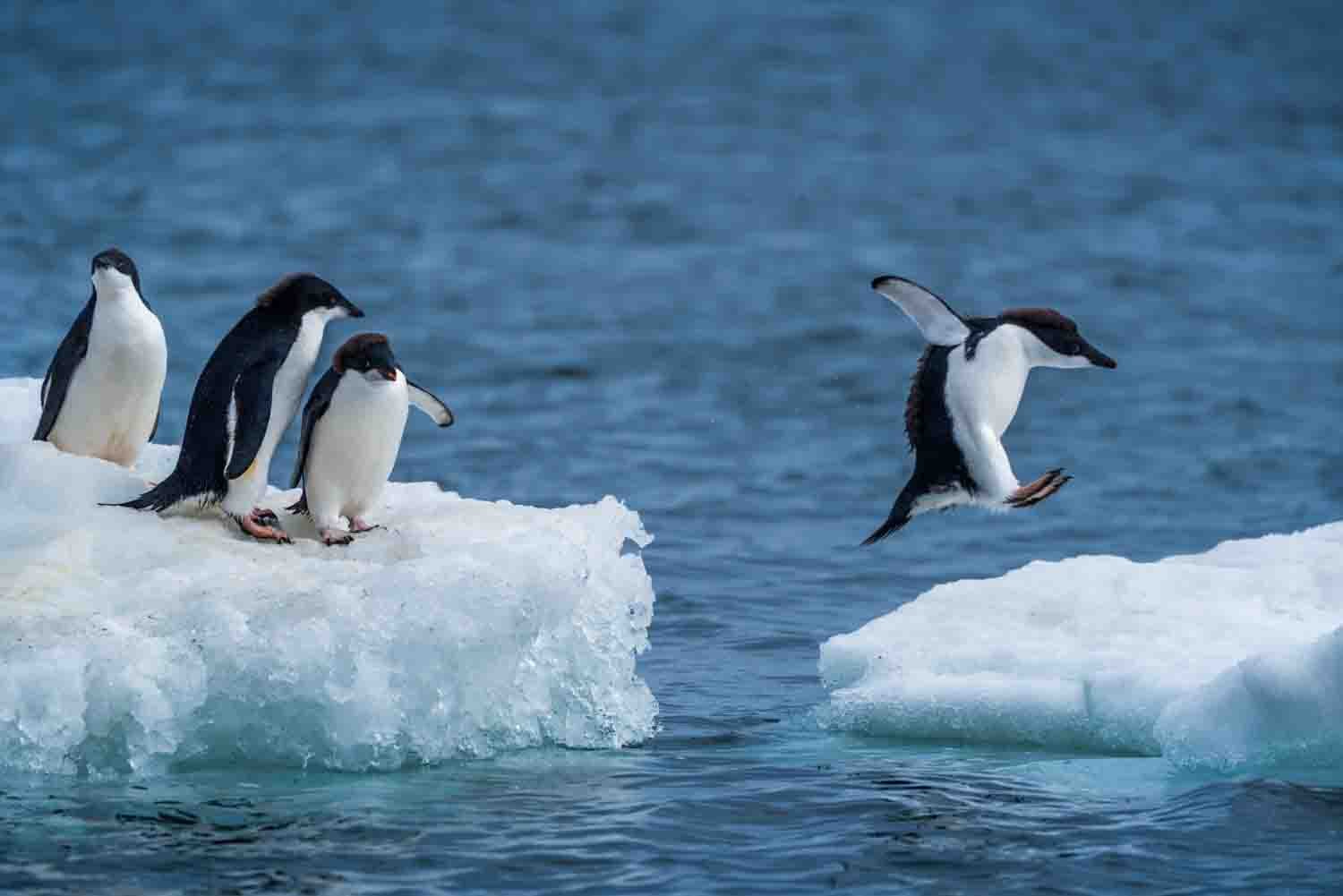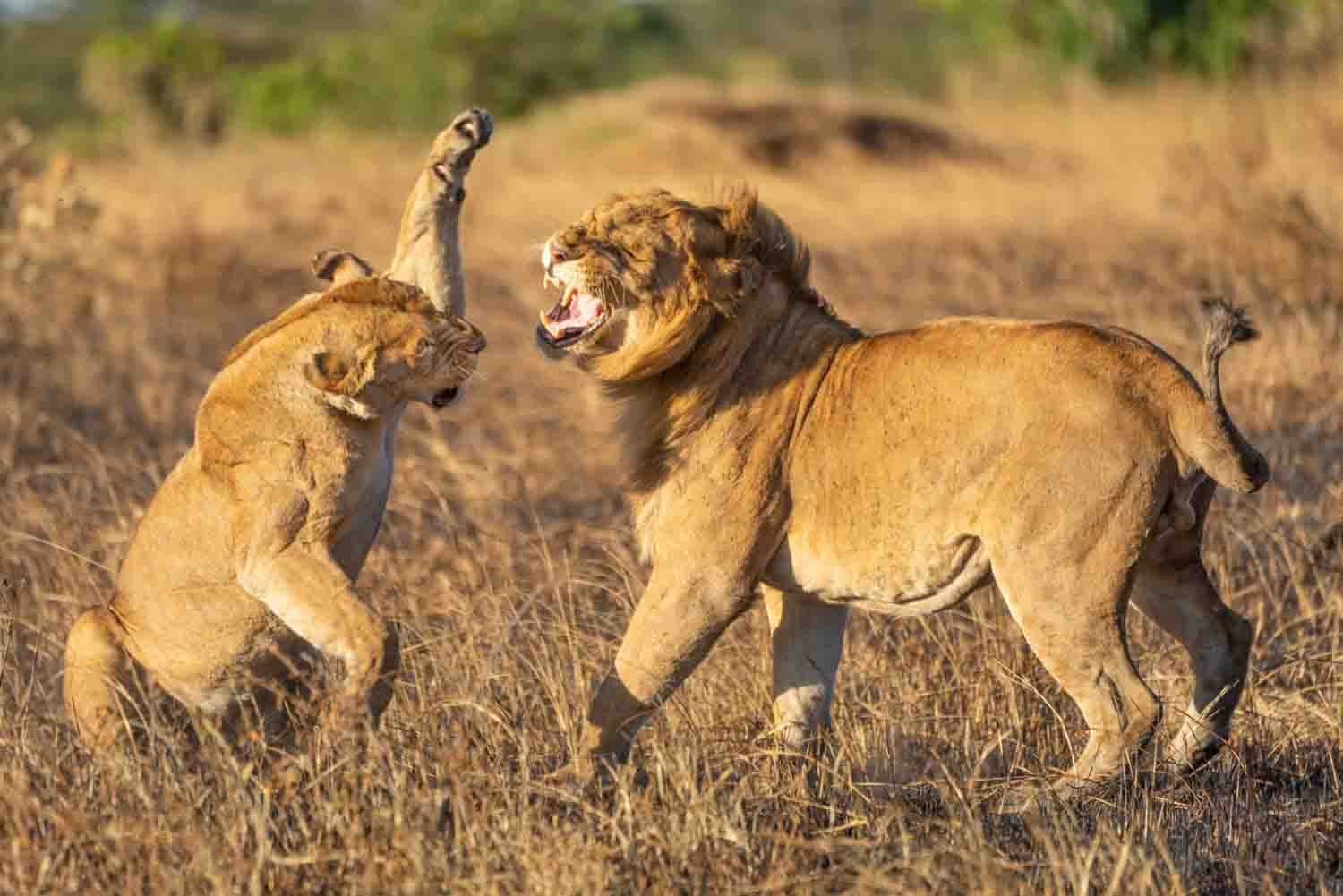Fieldcraft
Waiting for Godot…
Mother’s Pride
What is ‘fieldcraft’ exactly? Well, it’s the combination of knowledge and experience that lets you maximise your chances of taking good wildlife shots by knowing where and when to go and being able to predict what happens next.
You can gain some knowledge by doing research in advance, learning about your target species, their distribution, their behaviour and any seasonal patterns. The rest is all about spending time with the wildlife—seeing for yourself what tends to happen and learning as much as possible from your guides.
You never stop learning, but every step you take should make you a better wildlife photographer.
Where to go?
This is obviously a key question, but there’s no right or wrong answer. It depends which species you’re after and what kind of shots you want to take.
Which Country?
If you love the cheetah and want to photograph a hunt, there’s no point going to Chobe National Park in Botswana. It’s a great place for elephants, but there are no open plains, so you’ll almost never see a cheetah. You’d be better off going to the Masai Mara, where I once saw five cheetah kills in a week…!
The first step, then, is to decide what you want to photograph and take it from there. It’s easy enough to do your research online these days, and you can always have a chat with local experts at your tour operator of choice.
I love the big predators, and I’ve been to 36 countries on all seven continents trying to find them. Here’s a short list of the major animals I’ve photographed around the world and the best places to find them:
Polar bear: Svalbard (based on board ship with Zodiac cruises) or the Hudson Bay in Canada (on foot)
Brown bears: Brooks Falls, Alaska (to see them catching salmon, watching from the bleachers!)
Tigers: Tadoba or Bandhavgarh in India
Lions: western Serengeti in Tanzania (for prides of up to 60 lions!)
Jaguar: Pantanal, Brazil (on boat rides)
Leopards: Masai Mara in Kenya or Serengeti in Tanzania
Pumas: Torres del Paine National Park, Chile
Cheetahs: Masai Mara in Kenya or Serengeti in Tanzania
Elephants: Chobe National Park, Botswana (for herds of up to 300!)
Rhinos: Ol Jogi, Kenya, or Etosha, Namibia (for daily sightings)
Hippos: Chobe National Park, Botswana, or various places in Tanzania and Zambia
Whales: Antarctica (especially humpbacks, if you can find them!)
Penguins: Antarctica
Eagles: Chobe National Park, Botswana (for African fish eagles)
Lilac-breasted rollers: Botswana (although there are fewer and fewer these days…)
You’ll notice that most of these species are African predators, but that’s just my preference. I go to Africa quite a lot, and I love the private conservancies, such as Kicheche in the Kenyan Masai Mara, where you can drive off-road and you’re never kicked out at closing time.
You can obviously decide for yourself what you want to see, but a little research goes a long way. You don’t want to end up booking a trip to the Antarctic in the hope of seeing polar bears…!
Which Region?
Once you’ve decided which country to visit, your job’s still not done. Most of the safari countries in Africa, for instance, have very different zones that offer different wildlife and completely different experiences.
Namibia, for instance, has the waterholes of Etosha for plentiful sightings of rhinos and other animals, but it also offers the minimalist, desert landscape of Dead Vlei—where you probably won’t see a single animal!
Which Lodge?
Even once you’ve settled on the region, different lodges offer different experiences. Some get a reputation for regular sightings of certain species, and not all will provide the accommodation or services you’re looking for—at an affordable price!
I always like to go to new places. Given a choice between going to my favourite restaurant or the one I’ve always wanted to visit, I’d always choose the latter. However, I’ve done enough travelling now to know what I like and like what I know!
That means I tend to go back to a few key areas or lodges. Based on prior experience, I know what I’m going to get in advance, so it’s a low-risk approach that helps me get the biggest bang for my buck.
I tend to do deals with local African lodges that are happy to put me up for free in exchange for my pictures. That doesn’t always work out, but it’s a great way to save money and spend more time with the wildlife.
Which Location?
One of the benefits of going back to the same places is that you can fine-tune the answer to the question ‘Where to go?’ Once you’ve spent a few weeks somewhere, you’ll generally get to know the best places to see certain species, and that’s a real time-saver.
For example, I love to take shots of animals silhouetted at sunrise or sunset, but that means finding the right location with a treeless plain gently sloping up to the east (at dawn) or the west (at dusk). When I first visited Grumeti Serengeti Tented Camp, I didn’t know where to go, so I asked the manager. He recommended a local man-made waterhole, and I went there the following morning…to find a lioness posing for me beside the water!
Low Profile
I’ve also been to the Chobe region of Botswana a few times, and I’m starting to recognise particular features that are particularly photogenic. There’s a large termite mound down by the river, for instance, that appears in this backlit shot of a chacma baboon, and I’ll be sure to go back there next time I visit Muchenje…
When to go?
Bear Gills
This is the other big question—and it’s important to get it right!
What Time of Year?
Some species hibernate, some species migrate, and most species show patterns of behaviour based on the time of year. If you go to the right place at the wrong time, you’ll end up being disappointed.
A good example of this is the brown bears in Alaska. You’ll only ever see them catching fish at Brooks Falls during the salmon run in late July—but the exact timing isn’t guaranteed.
It’s so popular these days that it’s almost impossible to get accommodation nearby for more than a night or two, and Brooks Lodge has even started running a lottery to decide who gets to stay!
I was lucky enough to go in 2015, but I could only find a hotel in nearby King Salmon, so I had to take a floatplane to work every morning!
In Botswana, the key feature of the landscape is the Chobe river, which overflows its banks to form a floodplain during the Green Season. That attracts migratory birds that you just won’t see in the Dry Season, later in the year. However, the upside of going in October is that conditions are so dry that the waterholes dry up, which means you see more animals down by the river.
What Time of Day?
The other question to ask is ‘What time of day?’ Most people want to spend as much time with the wildlife as possible, but the light is best during the so-called ‘golden hour’ just after sunrise or just before sunset.
This warm, diffuse light from a low angle is ideal for wildlife photography, so it pays to go out as early as possible and stay until the sun goes down.
In Africa, that’s almost been institutionalised. The sun’s so hot and harsh during the middle of the day that most lodges only offer morning and evening game drives.
If you’re close to the Equator, there will be around 12 daylight hours from around 0630 to 1830, so the morning game drive will normally start at around 0600. If it only lasts a couple of hours, you can have breakfast when you get back. However, if it’s a long one that lasts until lunchtime, you’ll probably have a ‘bush breakfast’.
That means your driver and/or guide will cook an English breakfast of sausages, bacon and eggs, and you can enjoy it while drinking coffee or juice and observing any nearby wildlife. I often tell my fellow guests that they’re eating in my favourite outdoor restaurant in the world…!
As well as the golden hour, you also have the so-called ‘blue hour’, either just before sunrise or just after sunset. You won’t get any direct sunlight, and the ambient light will have a bluish cast (hence the name). This is handy if you want to create a sense of loneliness or mystery or emphasise the coldness of the weather.
Wherever you go in the world (outside the polar regions), the light tends to be at its harshest and most vertical during the middle of the day, which is not ideal for wildlife photography. However, that doesn’t give you an excuse to stay at home!
If the weather’s overcast, there won’t be any shadows to worry about, and you can always switch to black and white if you don’t like the colour cast.
At the end of the day, you’d rather be taking pictures than not, so you might as well go out if you get the chance. I once witnessed three male lions take down a buffalo at around midday, and I’d never have seen it if I’d been having a nap back at the lodge!
Three’s a Crowd
What Happens Next?
Now we’re getting down to the crunch! How do you know what’s going to happen next? This is determined by the species, the location and sometimes the individual. The ‘big’ events are obviously feeding, drinking, mating, births, and deaths, but, whatever you’re photographing, it’s good to know what to expect so that you can get ready with your camera settings.
Experience helps, but you will start to pick up patterns of behaviour pretty quickly. Here are a few examples:
Alarm calls from birds and animals can often lead to predators.
Animals tend to stand pointing in the direction of predators.
Birds tend to poop just before they take off.
Lions curl their tongues before yawning.
Sleepy lions will get up after yawning three times.
The male lion or leopard will bite the neck of the female towards the end of mating, giving you notice that he’s about to withdraw—which is when she often lashes out!
Cheetahs feeding on a kill always sit up and look around to check for other predators.
Wet lions point their noses in the air before shaking the water off.
Elephants in Chobe National Park, Botswana, spend mornings in the woods and then go down to the river at lunchtime.
Bee-eaters tend to return to the same perch when catching prey on the wing.
The key is to use all the sources of information you can manage to prepare yourself for those rare moments of action that might give you the chance to take great wildlife photographs.
People generally prefer action shots to portraits, so you have to be ready when the time comes!
Find Hunting Animals
I love to see animals hunting, especially the cheetah. There’s nothing more exciting than seeing a cheetah take down a gazelle at full chat!
However, it’s not easy to know when cats are about to hunt, and I’ve never seen a leopard kill despite having gone on over 300 game drives!
All you can do is try and spot the signs. The cat will generally start out by staring at the potential prey, which will usually (but not always) be a lone animal. After that, it’ll start stalking its victim. This is easy to spot as the cat will become very careful and stealthy in its movements.
The final stage is the chase itself, when the cat suddenly breaks into a run and tries to catch its prey. If it’s a cheetah hunt, this is when it gets really exciting!
Lions tend to hunt in teams, and it’s generally the lionesses who are the hunters amongst the pride—although there are plenty of nomadic males that obviously don’t have any females to do the job for them!
A common strategy is to form a kind of trident. One lioness will approach the prey directly while two others go round on either flank. I’ve seen this happen myself. Three lionesses were hunting a warthog, and they formed a classic trident—but the warthog still got away…!
Cheetahs tend to hunt on their own. You do find coalitions of animals, such as The Five Musketeers in the Masai Mara, but they don’t work as a team. One will catch the prey, and then the other ones will simply join in to bring it down and subdue it.
Leopards are ambush hunters, so you’ll rarely see a chase. The closest I came to a leopard kill was when a herd of wildebeest was galloping past a leopard in long grass. We knew the leopard was there, and we could see one of the wildebeest go down, but the grass was too long to take any pictures of the kill itself. Very annoying!
Find Mating Animals
If you’re lucky enough to find mating animals, it’s fairly easy to work out what’s going to happen next—especially with lions!
Lions mate every 10-20 minutes for a whole week without hunting or even eating, so you’ll get plenty of chances to get the money shot (so to speak!).
I set the stopwatch on my iPhone so that I’m ready for the next round, and it’s usually initiated by the lioness almost crawling around very low to the ground to signal her readiness to the male.…
Start Upwind (or Downwind)
Bad weather tends to produce predictable outcomes—and that applies to people as well as animals!
Birds take off and land into the wind, for example, which means you need to stay upwind of them to make sure you can photograph their heads rather than tails.
Wing Forward
For mammals, though, it’s the opposite. Animals tend to have a great sense of smell, so they can easily be put off if they sniff you out. The wind also carries sound, so it’s easier for them to hear you if you’re upwind.
Look for Water
Whether we’re talking about rain, hail, sleet, snow or just waterholes, lakes, rivers or the sea, water leads to predictable behaviour. What does a dog do when it gets wet? It shakes itself. It’s the same for lions, tigers, bears and just about any other mammal. They all dry themselves in the same way.
If you know it’s going to happen, you can get ready by dialling in a fast (or slow) shutter speed to capture the moment.
You should also look for animals when they’re about to drink. Giraffes splay their legs when they bend down, which makes a great shot in itself. However, the best opportunity comes when they’ve just finished drinking. They almost always whip their heads up, letting a trail of water drip from their mouth. If you time it right, you can get shots like this one…
Bird of Spray
In rainy or snowy weather, you can also take portraits that you’d never get in other conditions. Yes, it might mean going out when you’d rather stay in bed, but as long as you wear the right gear, it’s worth it for the results! I took this shot of a gentoo penguin in a snowstorm in Antarctica with a Force 9 gale blowing. I couldn’t even turn round because of the wind and the snow, but I’m glad I stuck around…
Birds such as ducks and geese also have a little routine when they’re paddling around. They duck their heads underwater a few times then preen their feathers and finally rear up and flap their wings.
Again, if you know it’s going to happen, you won’t be taken unawares, and it’s much easier to choose the right settings in advance.
Use Your Guide
Wherever you are in the world, your driver or guide should be your first port of call. In Africa, they tend to be very helpful and knowledgeable, based on years of training and experience, so you should ask them for their advice. I keep a list of all the species I see on all my trips, for instance, so I always ask my drivers to tell me when they see new species, especially birds.
I also rely on my driver sometimes to ‘encourage’ a bird to take off. I don’t mind waiting a few minutes, but it gets pretty boring for everyone else in the vehicle, so I’ll ask the driver to start the engine, slam the door or even get out and walk up behind the bird if necessary.
Guides are usually a mine of information, so it pays to have a chat with them and learn what you can. I generally try to do a deal: I’ll teach them about photography, and in exchange they can teach me about the wildlife. It works out pretty well.
One thing I learned from my driver was the mating habits of lions. I was spending a few months at Klein’s Camp in Tanzania, and a few nomadic lions had recently taken over a local pride. After killing all the cubs, they then proceeded to mate with the lionesses as often as they could—and I was lucky enough to see lions mating 29 times in just a few weeks!
The great thing about lions mating is that it’s so predictable. They’ll go at it every 10-20 minutes for a week—without hunting or even eating! That gives you a great opportunity to position yourself in the right place at the right time to get a dramatic action shot. It’s not easy at first as the action happens very fast without much warning, but if you set your timer on your smartphone, you’ll get all the action again in just a few minutes…
Learn from Experience
There’s no substitute for being there, and the more times you can witness animal behaviour, the easier it is to predict what will happen next.
The daily routine of most wildlife species is not complicated. It mostly revolves around eating, sleeping and (occasionally) mating. Predators hunt; prey animals graze or browse.
The trick is to know when that routine is going to be broken. Speaking personally, the most exciting wildlife photography experience I’ve ever had is seeing a cheetah hunt. There’s nothing quite like it for drama and adrenaline-pumping thrills and spills. The only problem is that it’s devilishly difficult to work out when a hunt is about to happen.
There are many times when a cheetah will look as if it’s interested in a hartebeest or gazelle, but it rarely ends up in a chase. And even if it does, there’s no guarantee that the cheetah will actually keep on going until it catches its prey.
That can be very frustrating!
I went on five safaris before I saw my first kill, and I was beginning to get very despondent. I wanted to see a kill so much, but there didn’t seem to be anything I could do about it!
That all changed when I went to Kicheche Bush Camp with Paul Goldstein for the first time. He’s the master of predicting animal behaviour because he’s seen it all before. He part-owns Kicheche, and he spends months at a time over there, so he knows where to position the vehicle and how to capture the action.
If you’re lucky enough to spend weeks or even months on safari or at a lodge somewhere with good access to wildlife, you should be able to develop a similar level of wisdom and experience.
Verdict
Long-haul trips to exotic destinations are expensive, so if you want to improve your wildlife photography, it pays to learn a bit of fieldcraft. Knowing where to go, when to go and what’s likely to happen next should stand you in good stead when it comes to making the most out of your time photographing animals and birds.
I’m a bit lazy when it comes to doing online research, but it’s an important starting point. Getting to know the behaviour of your target species should help make it a little bit easier to get the results you’re looking for, and it’s vital to know which locations will give you the best sightings and at what time of year.
Once you’re on location, you just need to make the most of your guides’ local knowledge and go out at sunrise and sunset to take advantage of the best light. After that, it’s just a matter of time before you develop all the skills and knowledge you need to take great wildlife shots.
If you’d like to order a framed print of one of my wildlife photographs, please visit the Prints page.
If you’d like to book a lesson or order an online photography course, please visit my Lessons and Courses pages.











